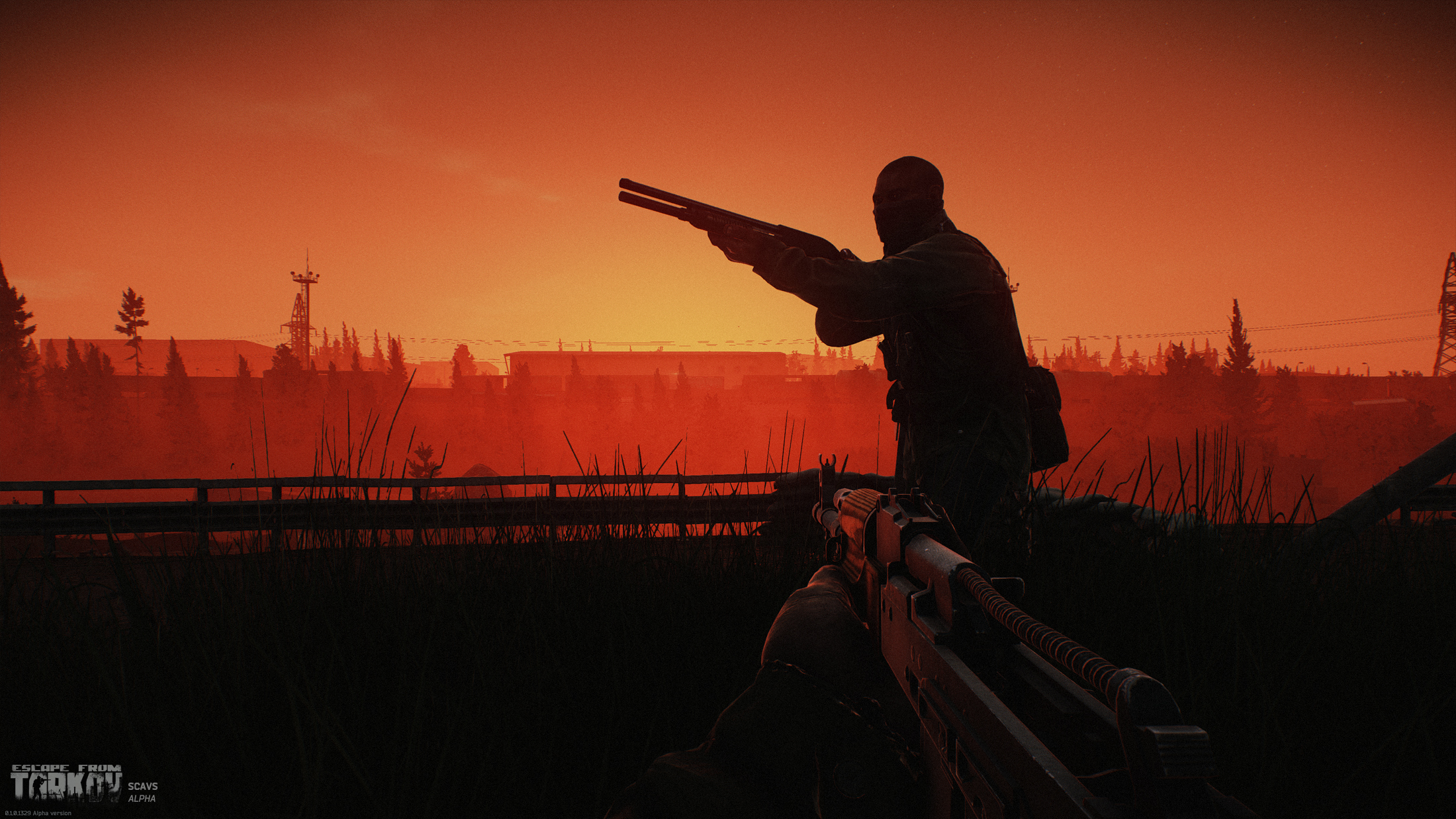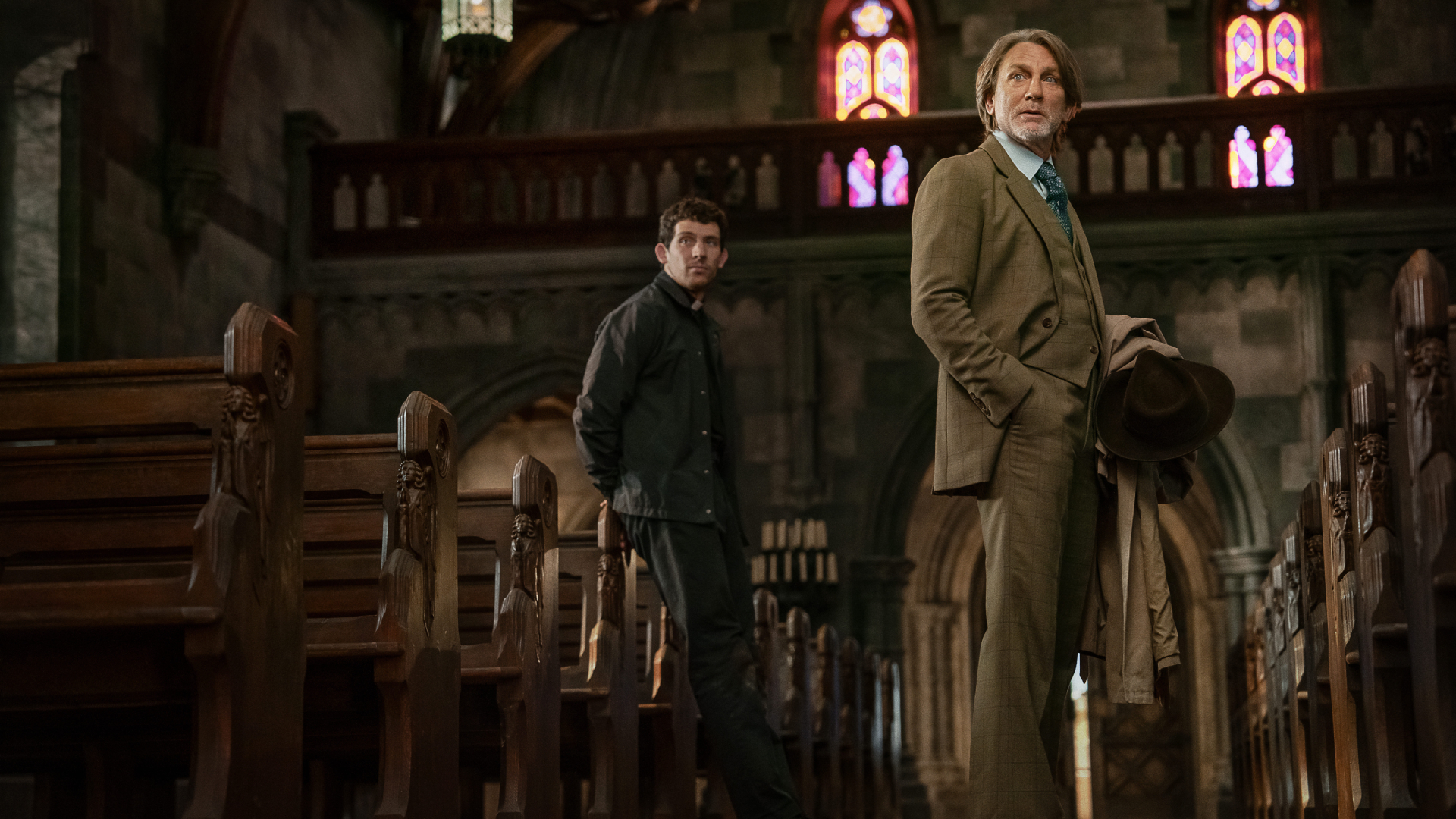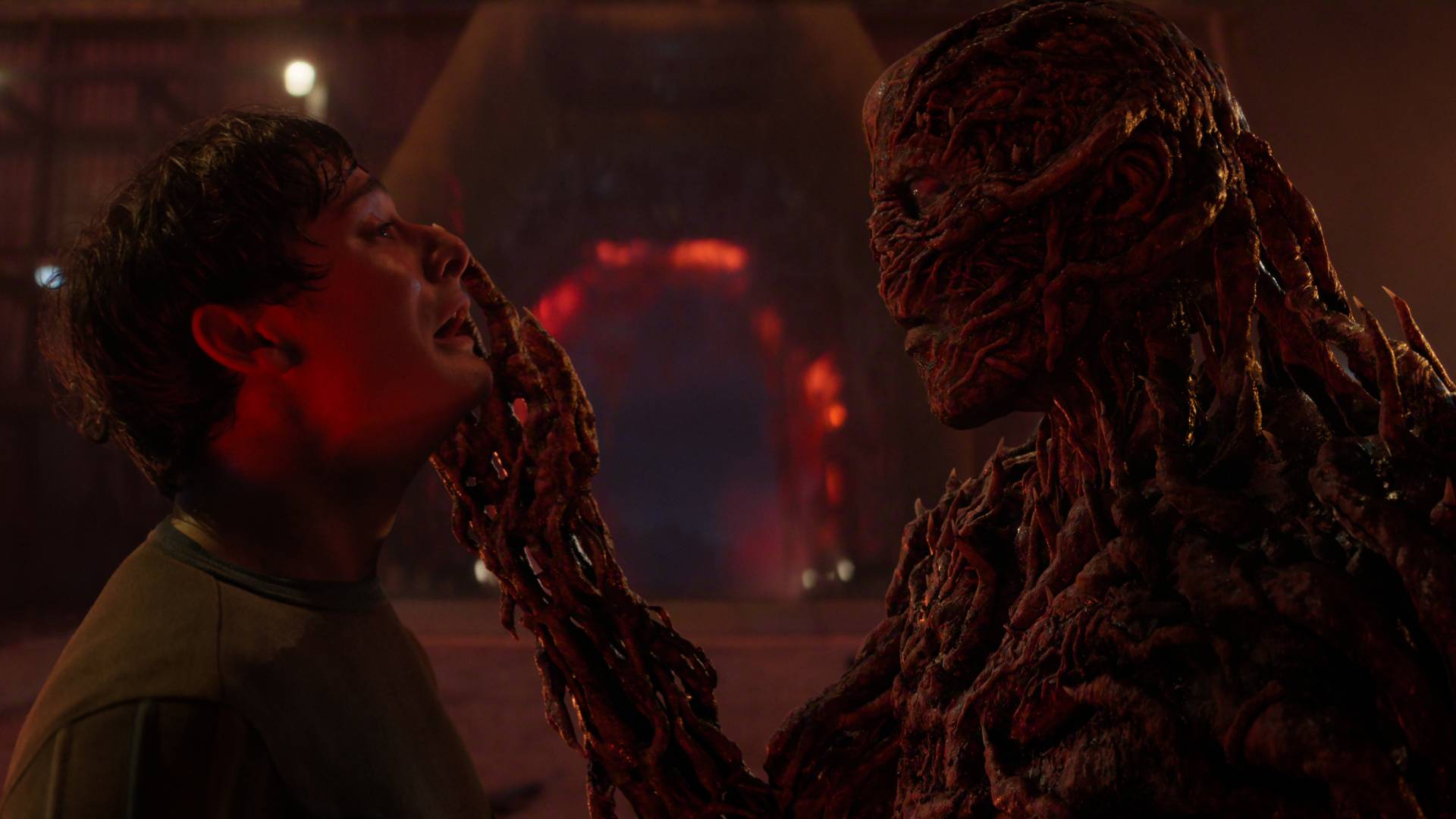"Fate Of Atlantis felt like the movie we never got," says Indiana Jones and The Great Circle producer as devs reflect on the series' gaming legacy: "It really captured the spirit of the movies that came before it"
From the Atari to Xbox Series X and PS5, Indiana Jones game devs past and present discuss the archaeologist's immense and lasting legacy in the medium
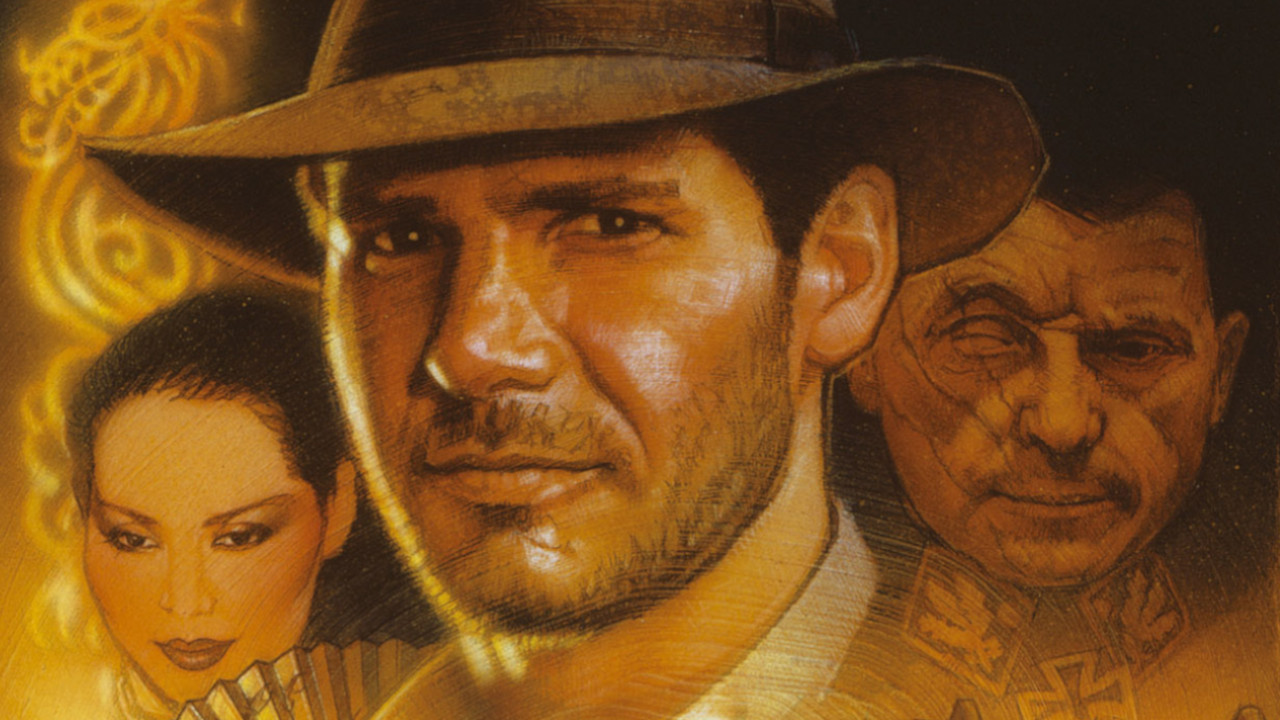
Long before Lucas and Spielberg's Raiders Of The Lost Ark appeared in cinemas in 1981, it was widely expected that its archaeologist adventurer Indiana Jones would be a big draw. This was certainly the case, so much so that Raiders became the most profitable and one of the best reviewed movies that year. An adaptation was soon licensed for the Atari 2600, and as Raiders director Steven Spielberg was a keen gamer he wanted to meet prospective developers.
He first met Yars' Revenge creator Howard Scott Warshaw. They hung out, and Howard won over the director by joking that he might be part of an advance alien scout party making movies to convince humanity that they mean us no harm. "I had an interview with Spielberg because he wanted to choose the programmer for Raiders," Howard recollects. "We chatted for a while, and then my weirdness kind of took over. I told him about my theory that he was an alien! I think he just loved that, because the next morning when I got to work he had talked to Warner or Atari and had said that he didn't need to see anyone else. I only saw him twice more during the entire development. He would come to Sunnyvale and I would give him a demo of the game, and then we would have lunch together."
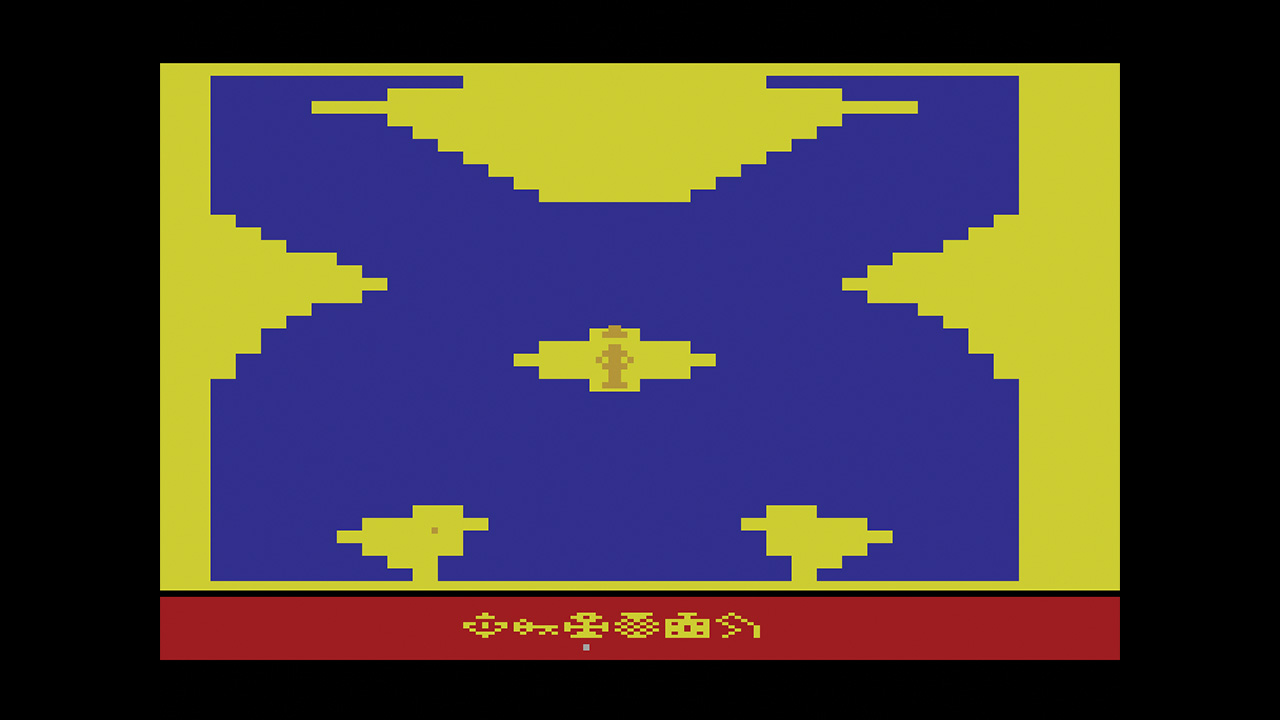
Since Raiders' hero was as adept at using his intellect to solve problems as he was at overcoming physical challenges, Howard designed his Atari 2600 adaptation as part action game/part adventure, and he looked to an earlier 2600 title for inspiration. "Indiana Jones had to be smart as well as adventurous and capable," Howard reasons. "I wanted to do both, so I made Raiders an action adventure game. My goal was to do the biggest adventure game that you could possibly imagine on the Atari 2600. The game Adventure had been genre-defining, so to me that was the launch spot. Then if I was going to stand on those shoulders I needed to do something to improve the view."

This feature originally appeared in Retro Gamer magazine 271. For more in-depth features and interviews on classic games delivered to your door or digital device, subscribe to Retro Gamer or buy an issue!
Of the many improvements made to what had been defined by Adventure, Raiders' inventory stood out as one of the most innovative. It allowed players to collect, arrange and combine multiple objects in order to solve the game's challenging puzzles. "There were cases where you had to manipulate your inventory in a certain way," Howard considers. "So you could have the same objects, but if they weren't in the right order you wouldn't be able to execute some challenges. Even if you got all of the objects and got down from the mesa then one of the thieves might steal your shovel. That sucked, because it meant that you had to go through all of that again!"
Mesas – flat-topped desert hills – played an important role in Howard's game. He devised a novel way for Indy to get from one to another, and an exciting method of getting the hero down to ground level from them. "I figured Indy could use a grappling hook to get between mesas," Howard enthuses. "It was about what I could do graphically to create action and to move him around. That also made the map room work, where you saw a map that told you where the Grail was. The idea of jumping off the mesa with a parachute to get to the Grail was just because I wanted some sort of hand-eye co-ordination challenge."

The 2600 Raiders adaptation sold over a million copies on its release in 1982, and in 1984 it was followed by the C64 platformer/puzzler Indiana Jones In The Lost Kingdom. In 1985, Atari released an arcade game based on the 1984 Raiders sequel Indiana Jones And The Temple Of Doom. Prior commitments meant that the Star Wars coin-op developer Mike Hally couldn't produce Atari's Indy title from the outset. "I'm sure the success of the Star Wars coin-ops led to a good relationship with Lucasfilm," Mike notes, "but when the Temple Of Doom project started I was working on Road Runner, so my involvement came after that. I was put on there to get the game done, because my expertise other than being a producer and lead designer was playfield design and gameplay. So I took what they had and I fully developed it."
Of course, not every scene in the Temple Of Doom movie was suited to being a level in the coin-op, so its development team adapted the action sequences that suited the hardware they were designing for. "If you strip out how the characters meet and how Indy gets to certain places then what you come down to is: he was in the mines to save the children and then he gets into the mine carts," Mike recalls. "Then there's the Temple Of Doom, and finally there's the end sequence with the rope bridge. Those were some of the best action scenes in the movie, so those were the action sequences that were pulled from the movie for the coin-op."
Weekly digests, tales from the communities you love, and more
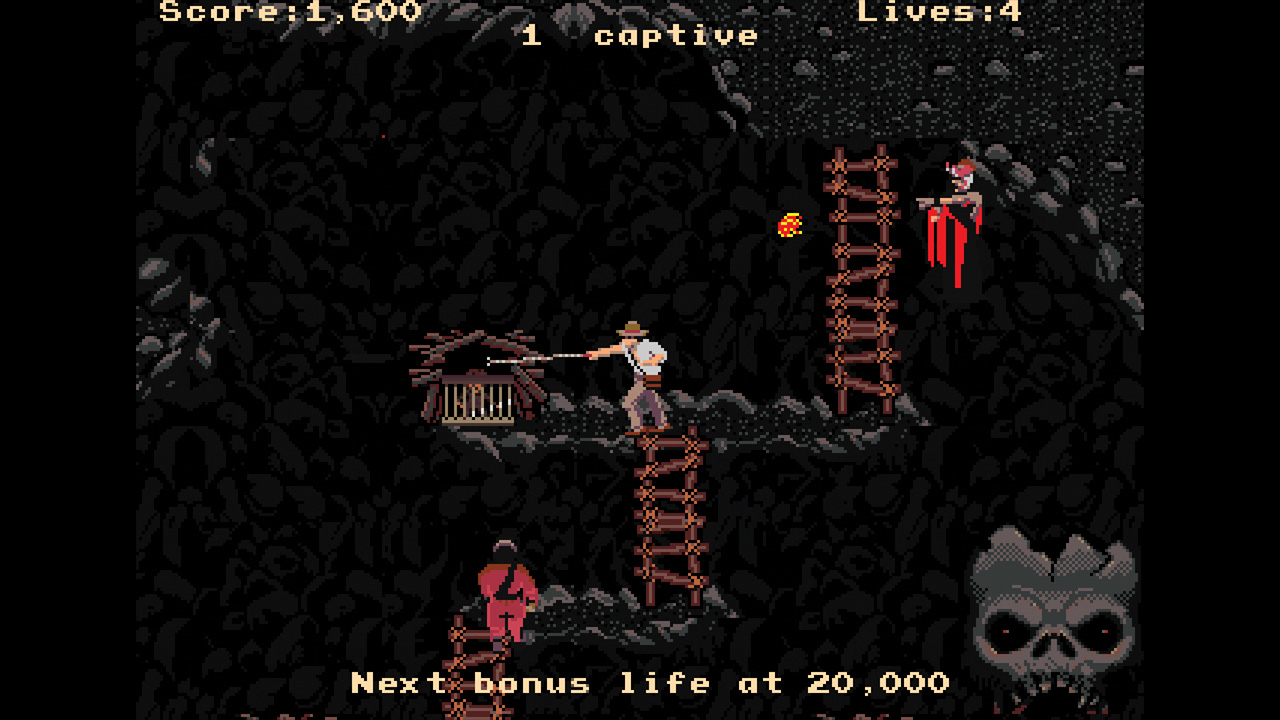
"The Temple Of Doom movie was all about Indy and his whip, so having it attached to him in the coin-op at all times was a no-brainer."
The sequences adapted from the second Indy film involved different gameplay and mechanics, but a constant throughout the coin-op was that Indy could always rely on his whip to defend himself and use as a makeshift swing. "The Temple Of Doom movie was all about Indy and his whip, so having it attached to him in the coin-op at all times was a no-brainer," Mike grins. "You had to position him so that it would hit the target you wanted to hit. Then one of the most fun parts of the game was using it to swing over gaps to get over hazards. So wherever we could use the whip we did."
Indy's whip was essential in the finale of Atari's Temple Of Doom arcade game, which tested players' reactions by sending enemies and projectiles at them as they crossed the rope bridge seen in the film. "We put Mola Ram in between Indy and getting to the other side to save his friends," Mike remembers, "so he was constantly having to deal with flaming hearts coming from the right and Thuggees moving fast from the left. You were constantly whipping to the right and the left, and moving back and forth, so it was a timing thing, but I think we captured the essence of the movie's finale. Later on, the Temple Of Doom coin-op team did the NES version. I did all the design for that from scratch, based on designing a consumer game versus what you would do for a coin-op."
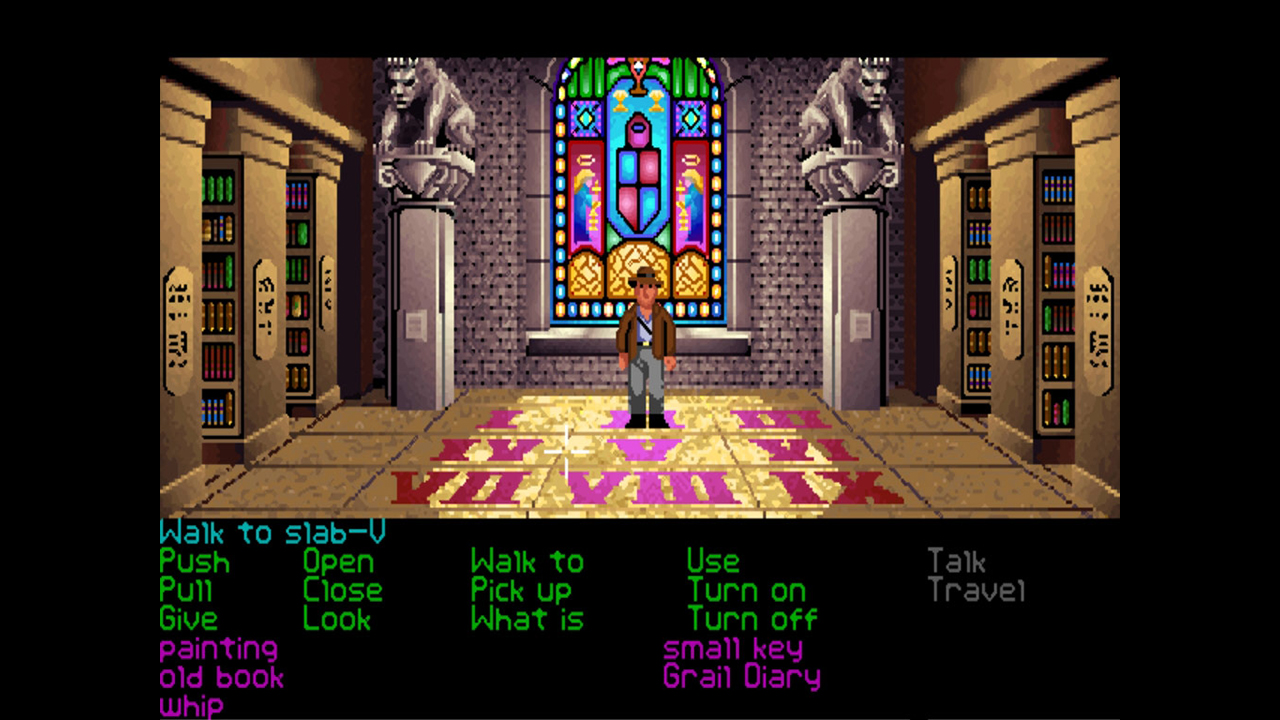
Before the Temple Of Doom coin-op was adapted for the NES by Mike and his team in 1988, the text adventure Indiana Jones And The Revenge Of The Ancients appeared in 1987. Then in 1989 a computer and console action game based on that year's Indiana Jones movie, Indiana Jones And The Last Crusade, arrived. Interestingly, three Czech text adventures for the ZX Spectrum were released by Frantisek Fuka between 1985 and 1990. They're not official releases, but are still of interest if you enjoy Indy's exploits.
The Last Crusade was also adapted as Indiana Jones And The Last Crusade: The Graphic Adventure, which was given to Ron Gilbert and others at Lucasfilm Games after a third-party developer let it down. "The Indiana Jones rights had been given to someone else, and they weren't performing. They weren't actually making the game," Ron points out. "So Lucasfilm pulled the rights back, and David Fox, Noah Falstein and I had nine months to finish the whole game – start to finish. So the three of us, who were some of the most experienced adventure game creators at the company at the time, just jumped on the project to try to get it done."
As with earlier Indy movie adaptations, consideration was given to which of The Last Crusade's action scenes would work in Lucasfilm's graphic adventure. A decision was then made to adapt sequences that could be lengthy puzzles. "Noah was in charge of the action sequences, so it was him that mostly focussed on those," Ron credits. "But I remember some of the conversations were about what was going to translate well, because we couldn't put everything in the game. We certainly wanted things that would have some duration to them, like working your way through the castle and finding parts of stuff. So we at least wanted to extend the action sequences out to that degree."
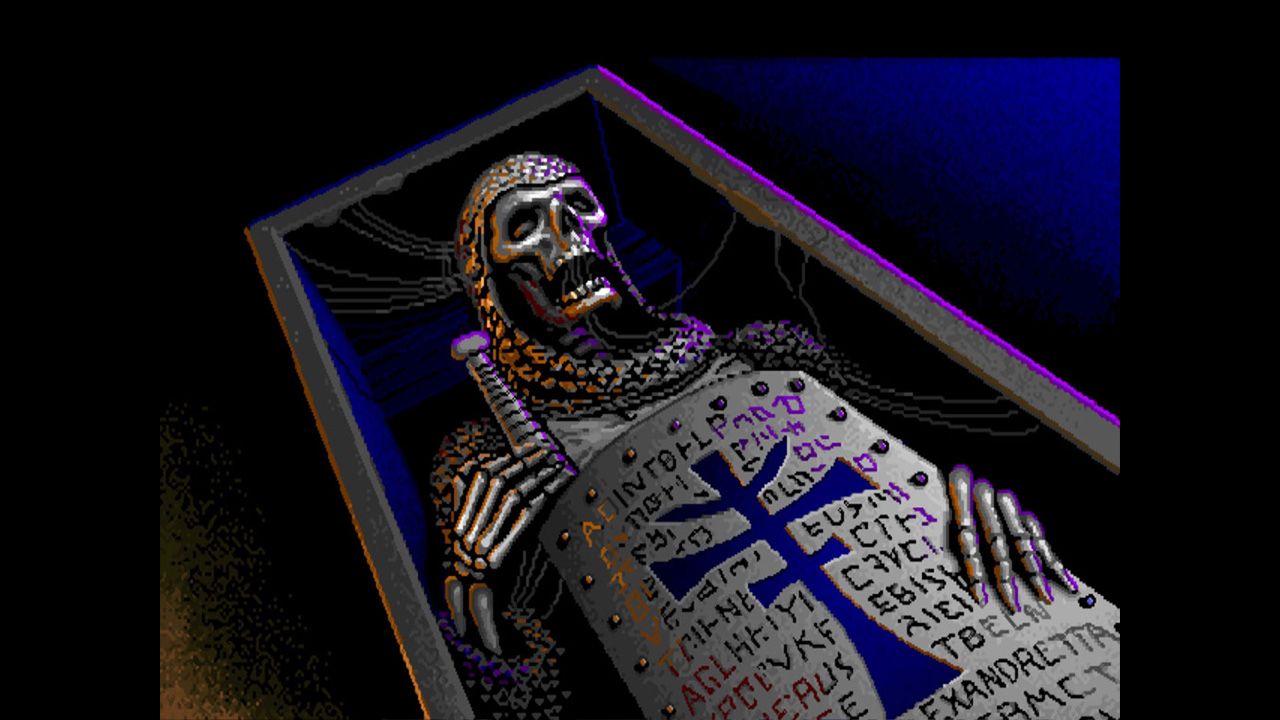
"The dialogue puzzles were a huge thing, because we didn't have those before."
An interesting approach was taken to solving puzzles in The Last Crusade: The Graphic Adventure, in that there were up to three solutions for each with points accrued over multiple playthroughs depending on how many solutions you found. "Some of that was based on how Sierra On-Line games calculated your score," Ron acknowledges. "But we didn't just want to have a score, so we called it the IQ – the Indy Quotient. That was a measure of how well you were being Indy. We had different ways to solve puzzles: the action way, the dialogue way and the puzzle way. To get the IQ up you played the game again to try each way."
Unlike the game's IQ points, its dialogue system was entirely original. It allowed players of Lucasfilm's game to immerse themselves in Indy's world by having conversations with its inhabitants. "The dialogue puzzles were a huge thing, because we didn't have those before," Ron points out. "Noah was probably instrumental in figuring those out. They ended up being super influential, every adventure game after that had dialogues in them. They really allowed players to feel like they were a part of the story because even when they didn't really affect the game you still felt more involved in what you were doing."
In terms of oversight from the movie's creative partnership, its director made periodic visits to inspect progress on the graphic adventure adaptation, although these were largely motivated by his passion for gaming. "Spielberg came by the office because he was visiting George for other reasons," Ron mentions. "He was a big gamer; he loved games. I remember showing him our game, and he would muscle his way in to grab the mouse."
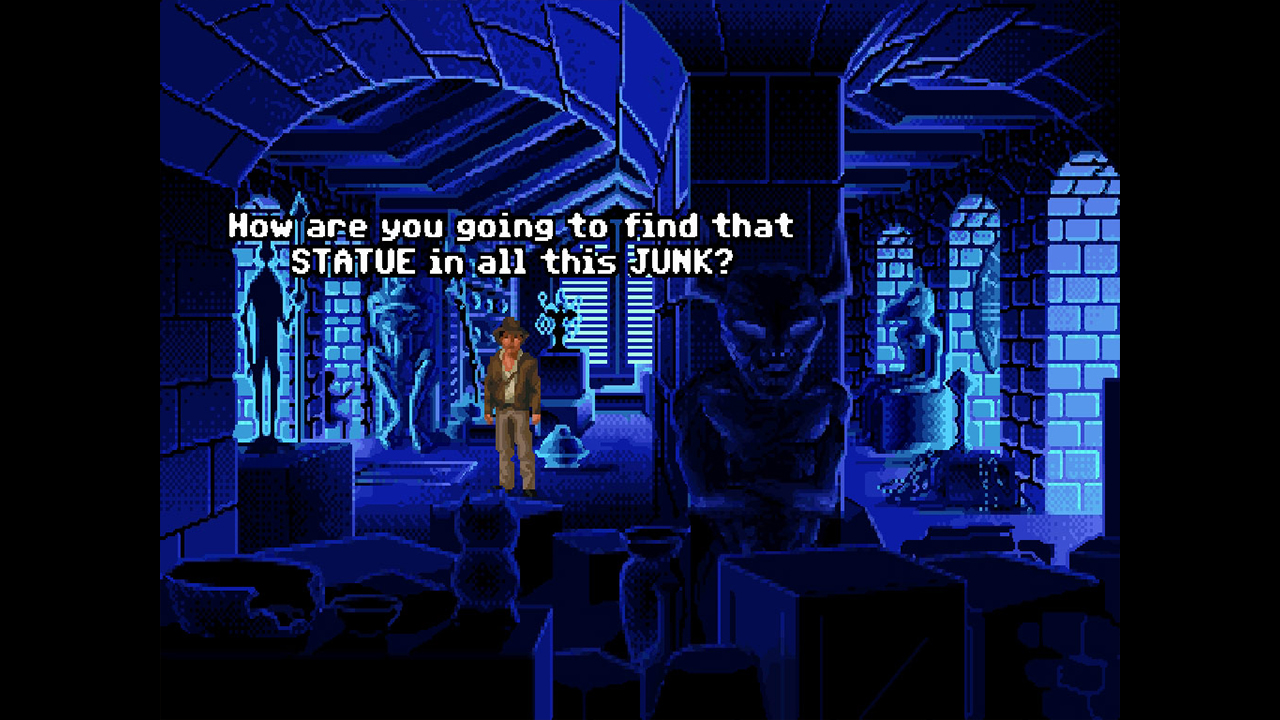
After The Last Crusade adventure game launched in 1989 to much acclaim, a NES adaptation of the third Indy movie was released in 1991. The 1992 Lucasfilm original adventure Indiana Jones And The Fate Of Atlantis was clearly influenced by the former, and was just as appreciated by gamers. This was especially true of Craig Derrick, who is now Lucasfilm Games' executive producer of the current Indy game The Great Circle. "I'm an Eighties kid, and I was a huge fan of Raiders, Temple Of Doom and The Last Crusade," Craig beams. "Fate Of Atlantis came out in the Nineties when we were all wondering if we were going to get another movie. The developers just nailed the tone, sense of adventure and incredible dialogue. Back then, Fate Of Atlantis felt like the movie we never got, because it really captured the spirit of the movies that came before it."
In an evolution of there being up to three ways to solve puzzles in its Last Crusade adventure, Lucasfilm developed three ways to play Fate Of Atlantis: the Team Path, Wits Path and Fists Path. "I think it was a brilliant design choice," Craig assesses. "We spoke a lot about it during the development of The Great Circle. Indiana Jones is a character that can solve problems in different ways. He isn't just a brawler or an academic or an adventurer; he's all those things, and I think it really made the character come together in gameplay for the first time. Giving players that choice at that time in games was really interesting, because it branched the story with different experiences along the way."
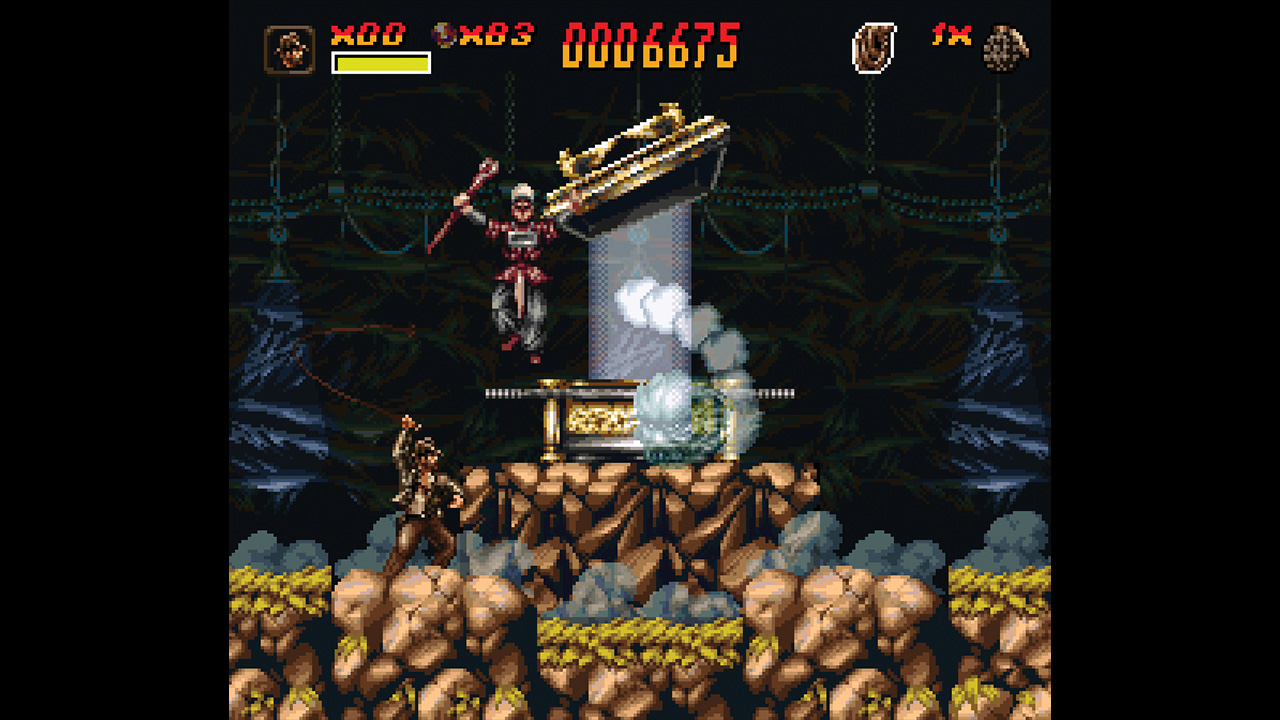
"We had to fit all three movies into one game because LucasArts projected that it would be done by 1994."
Of the three different ways Fate Of Atlantis could be played, its Team Path was perhaps the most unique. It relied on Indy co-operating and getting help from non-player character Sophia Hapgood, a psychic and fellow archaeologist. "Sophia Hapgood was a really great character, and the Fate Of Atlantis team really knocked it out of the park with her!" Craig exclaims. "She made the entire story work in a lot of ways, because you needed a good partner and the call to adventure. So Indy goes to New York to find her and then he gets pulled into this adventure. A lot of times that's just the character of Indiana Jones."
In 1992, both Fate Of Atlantis and a NES platformer based on the TV spin-off The Young Indiana Jones Chronicles hit shop shelves and were well received. Two years later, Factor 5 developed an ambitious SNES adaptation of all three Indiana Jones movies called Indiana Jones' Greatest Adventures, although this hadn't been the intention of its producer Julian Eggebrecht. "I was hoping to make three games, because I assumed that it should be possible to do Super Raiders Of The Lost Ark, Super Temple Of Doom and Super Last Crusade," Julian recollects. "Instead we had to fit all three movies into one game because LucasArts projected that it would be done by 1994, and by 1995 it was expecting the next generation Nintendo console would be out. Of course people still liked Greatest Adventures a lot."
A challenging Mega Drive title called Instruments Of Chaos Starring Young Indiana Jones also came out in 1994, and in 1996, a PC/Mac action adventure Indiana Jones And His Desktop Adventures followed. In 1999, Julian produced an N64 adaptation of the newly released PC title Indiana Jones And The Infernal Machine. Despite a tight deadline, he all but redesigned it for the console. "We wanted to do a completely reinvented N64 version of Infernal Machine," Julian reflects, "so we took the cancelled PlayStation version as the basis and ported that to the N64, then we merged it with our Battle For Naboo engine. We replaced the PC controls with a new camera and control system inspired by Ocarina Of Time, and then we made the weapons lock-on with targeting and all of that, so it was essentially Ocarina Of Time with Indiana Jones."
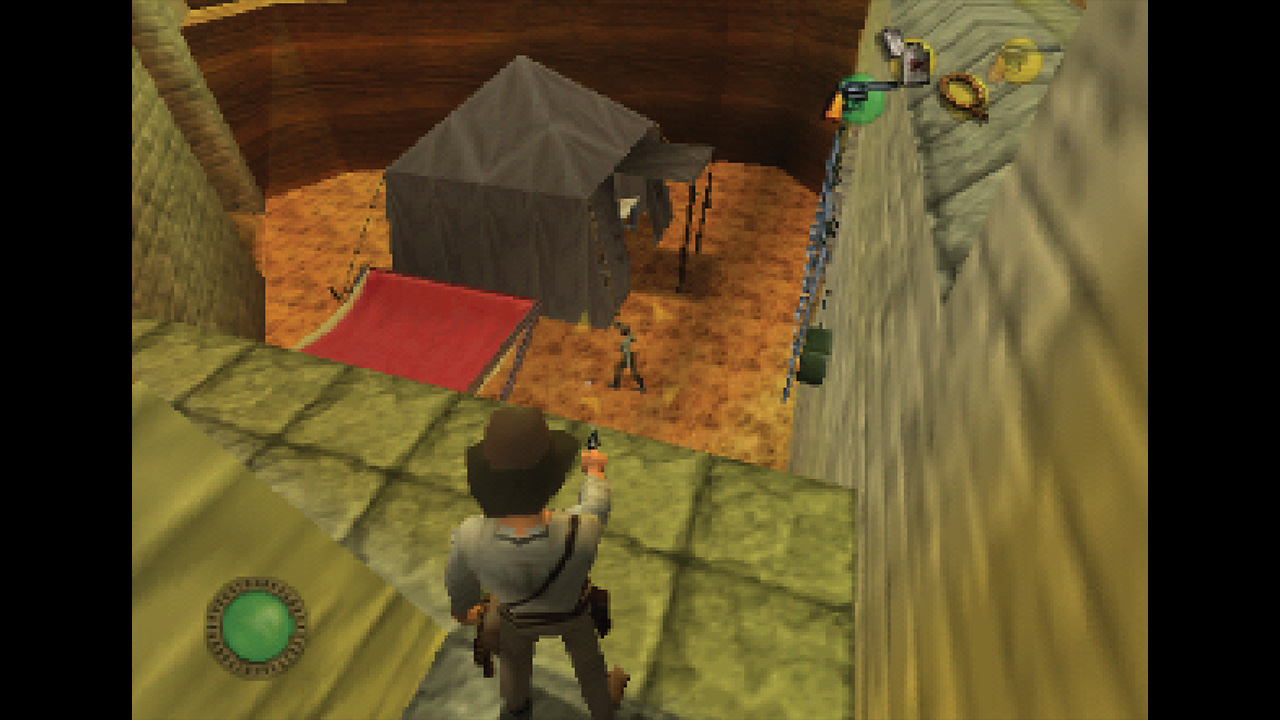
Infernal Machine reviewed well in 2000, as did a 2D Game Boy Color version in 2001. In 2003, the action adventure Indiana Jones And The Emperor's Tomb was released, followed by 2008's humorous retelling of the first three movies – Lego Indiana Jones: The Original Adventures, which coincided with the fourth film Indiana Jones And The Kingdom Of The Crystal Skull. A sequel called Lego Indiana Jones 2: The Adventure Continues appeared in 2009, as did the LucasArts action title Indiana Jones And The Staff Of Kings. Then in 2011, the Facebook game Indiana Jones Adventure World went live.
In 2023, Indiana Jones And The Dial Of Destiny arrived in cinemas, then Indiana Jones And The Great Circle appeared on PC and Xbox Series X/S in late-2024. The Great Circle channels a much earlier movie, as MachineGames creative director Axel Torvenius explains. "It all started with a conscious decision about which version of Indiana Jones we wanted to portray," Axel considers. "We're fans of all the Indiana Jones movies, but we settled on Raiders Of The Lost Ark being the prime resource. Obviously there have been great games too, like Fate Of Atlantis, so those were relevant. Then when we got closer to working with Lucasfilm Games we gained access to its archive and started digging into the juicy secrets."
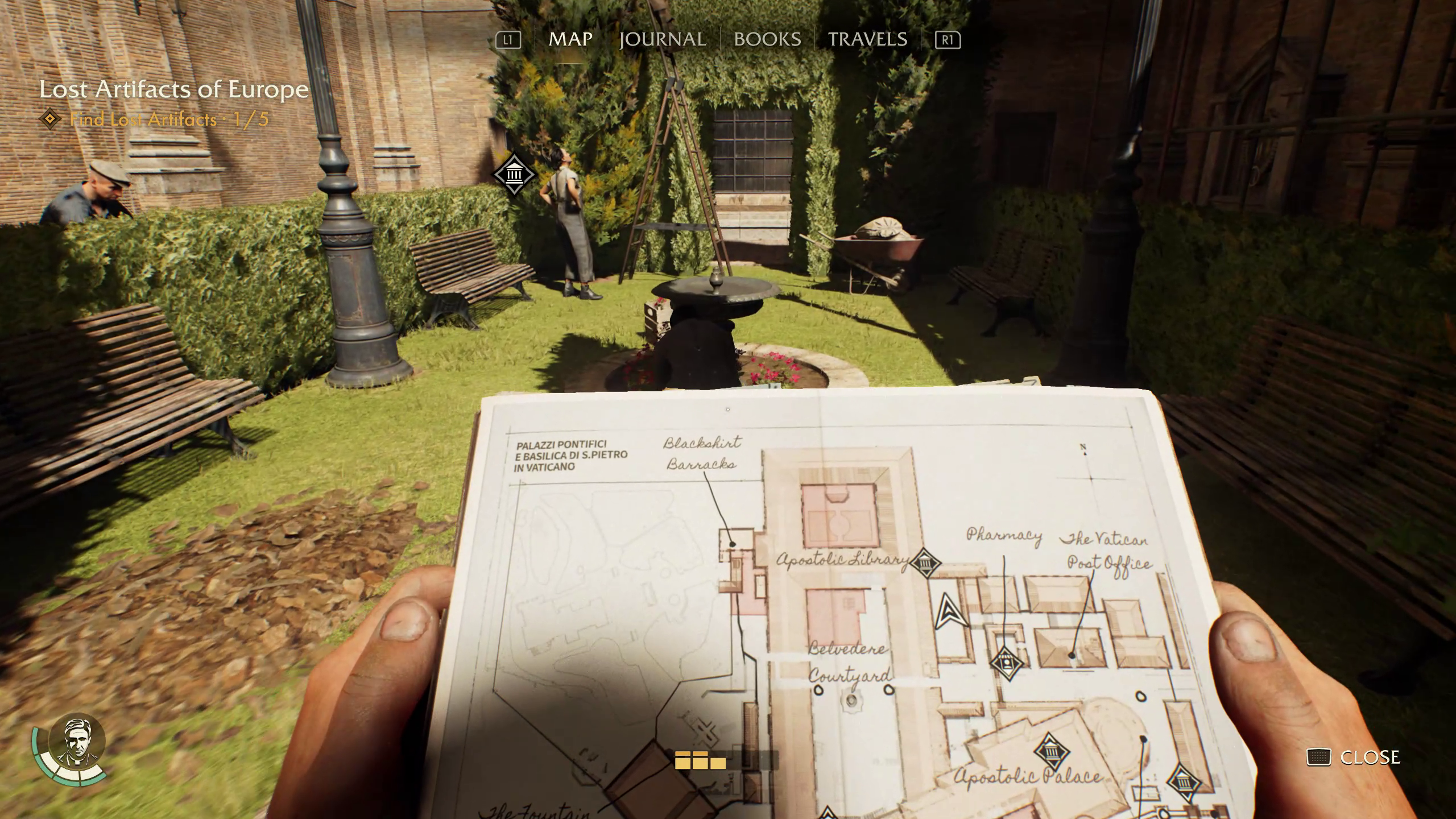
"When you're punching them in the face you can get so close you can see the saliva."
Unlike earlier Indiana Jones games, The Great Circle primarily gives players a first-person perspective view of the action. As well as providing a more immersive Indiana Jones experience, this was implemented to make its puzzles feel more intuitive. "We wanted the player to step into the shoes of Indiana Jones, and to be up close and personal with different components throughout the game," Axel remarks.
"We have a lot of puzzle-solving and interactions with mysteries, like picking up notes and looking at scrolls. We felt all of those close-to-face interactions were best perceived as part of a first-person experience. If they had been third-person you would need to either zoom in or have a pop-up screen, or whatever. We also have a lot of enemies, and when you're punching them in the face you can get so close you can see the saliva, so first-person gets you really close to the action. Although we also have third-person cutscenes and cinematics, and we move the game into third-person for all traversal and platforming."
As well as its first-person viewpoint, The Great Circle also stands out for its epic narrative, which involves a source of great power related to mysterious sites around the world that when viewed on a map form a perfect circle. "MachineGames executive producer Todd Howard had this overarching pitch in terms of the core premise that involved the locations of The Great Circle," Axel comments. "Well wouldn't it be cool if those were all connected, but what do they connect to and what's happening? We started figuring out what the big idea behind all of that was. I don't like spoilers, but there is a big cool thing at the end that's the enigma you're trying to solve."
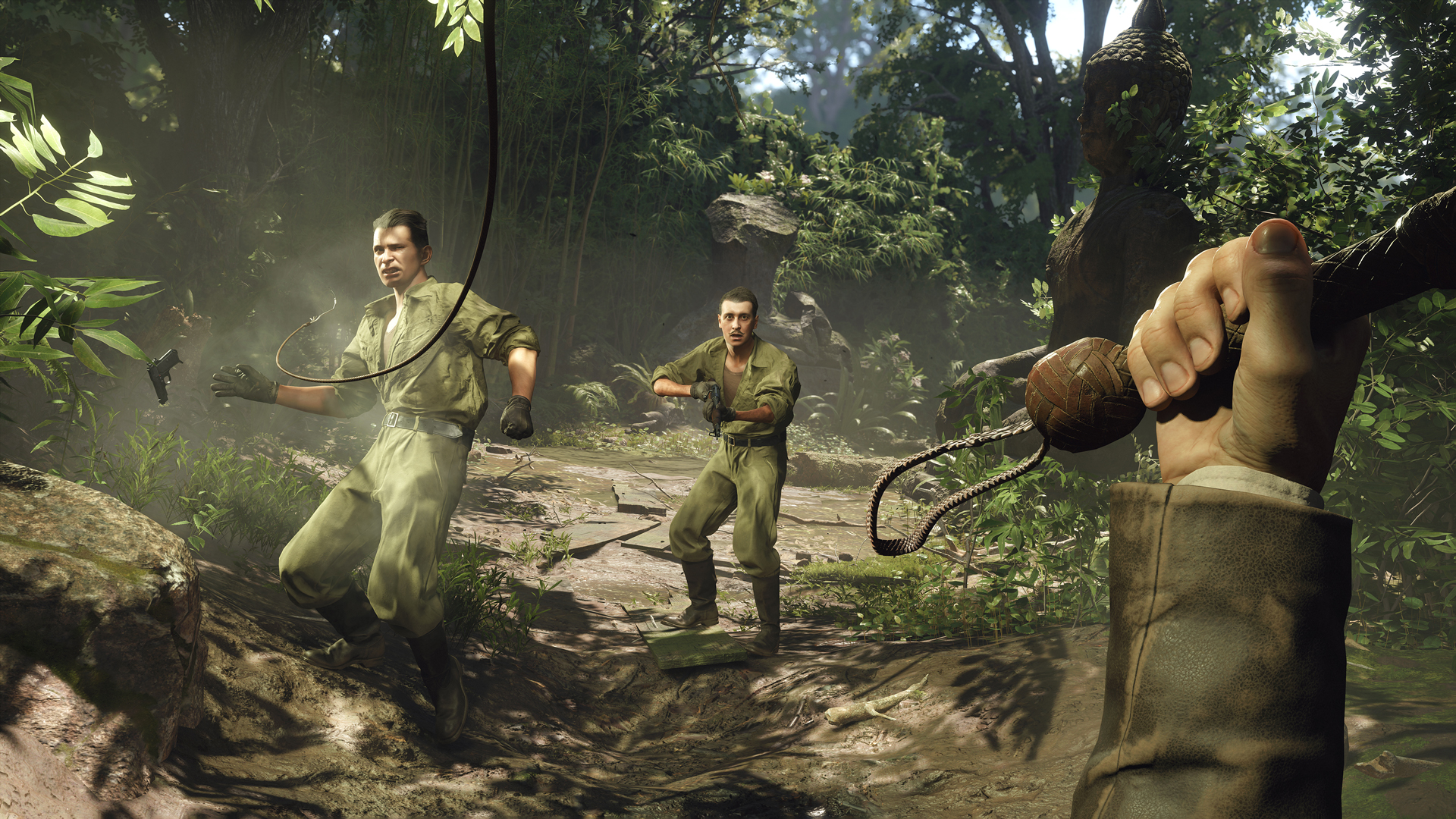
The way that The Great Circle seamlessly intertwines challenges requiring Indy's physicality, problem-solving and archaeological expertise is equally worthy of note. Axel describes this feat of development as an exercise in connecting gameplay that would otherwise have been disparate. "How did we balance going from crashing a battleship or whatever to the calm after the storm?" Axel ponders. "Well the set up we worked with pushes the player to go into the adventure aspect as well as platforming, and on the way to find a puzzle maybe they encounter a new enemy. I think that helped to make the big puzzles more of an adventure experience rather than just standing on the spot and figuring them out."
As Craig Derrick prepares for the 2025 release of The Great Circle for the PS5, the game's executive producer for Lucasfilm Games considers Indy's importance to the studio over the years and concludes by explaining why great Indiana Jones games continue to be made. "Indiana Jones has always been a cornerstone of Lucasfilm and Lucasfilm Games," Craig reviews. "He embodies adventure and mystery and puzzle-solving, and those things make really great games as well as action adventure movies. I think as to why we still make Indiana Jones games, well we're all fans. So I think there's absolutely always a place for Indy in gaming, and we were lucky that we had a chance to prove that with The Great Circle."
Stages of evolution: unearthing Indy's other notable entries
Indiana Jones in The Lost Kingdom

Release year: 1984 | Developer: Michael J. Hanson | Platform(s): Commodore 64
This C64 exclusive is part puzzle game/part platformer. It sets the player the task of completing logistic puzzles across six levels, all without any instruction on how to do so! All manner of hazards hamper your attempts to platform around, from bats and butterflies, to gargoyles and deadly orbs.
Indiana Jones in Revenge Of The Ancients
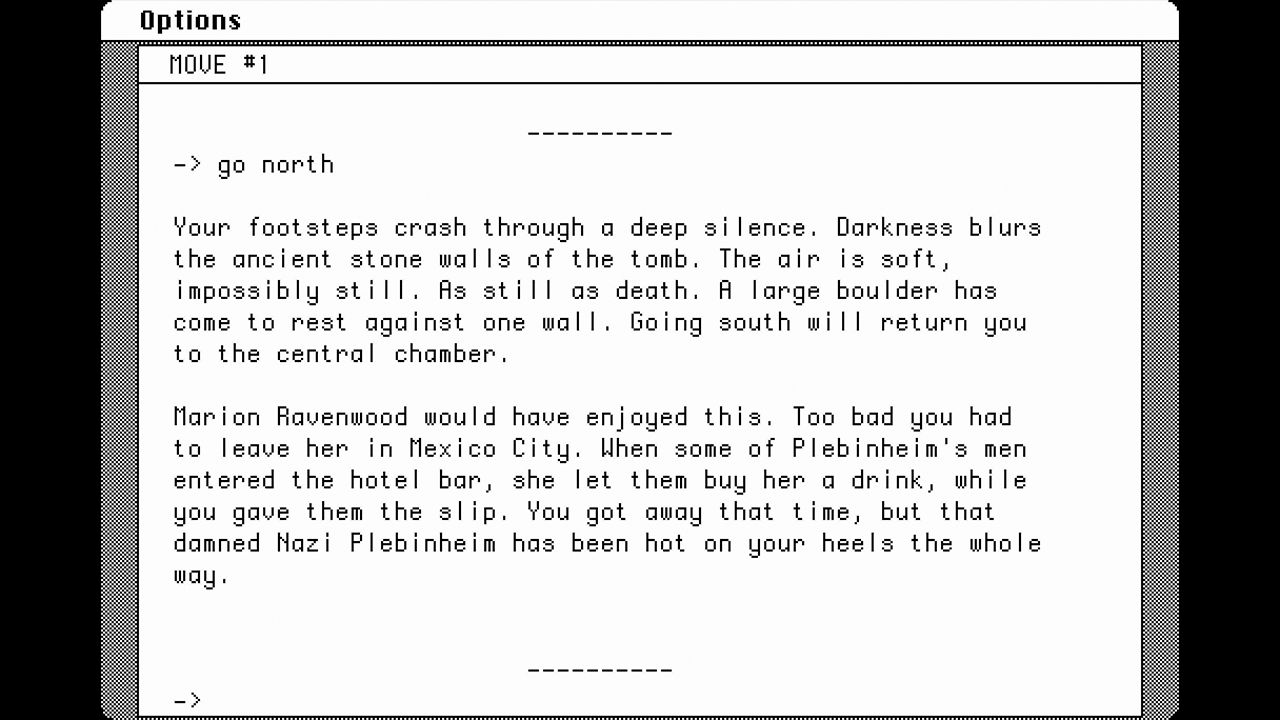
Release year: 1987 | Developer: Angelsoft | Platform(s): Apple II, Mac, MS-DOS
Set in the Mexican jungle, Revenge Of The Ancients is a challenging text adventure where death waits around every corner. Your goal is to recover a golden key before the Nazis get it. It’s visible from your starting location, but of course you can’t claim it without first solving numerous puzzles.
Indiana Jones And The Temple of Doom
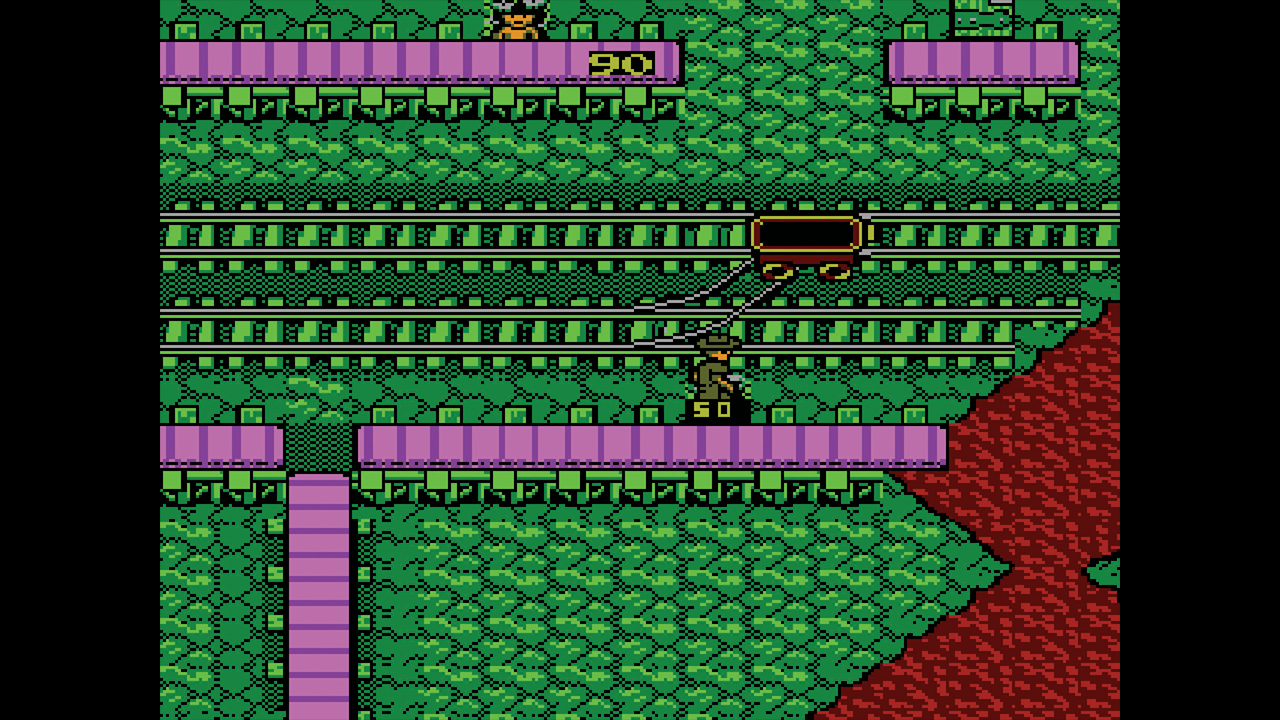
Release year: 1988 | Developer: Tengen | Platform(s): NES
Developed by the same team that made the arcade game of the same name, the NES Temple Of Doom has 12 variations of the stages found in the coin-op. These are referred to as waves. Helping you to beat them are pick-ups not found in the arcade title, such as guns, swords, extra lives and extra time.
Indiana Jones And The Last Crusade: The Action Game
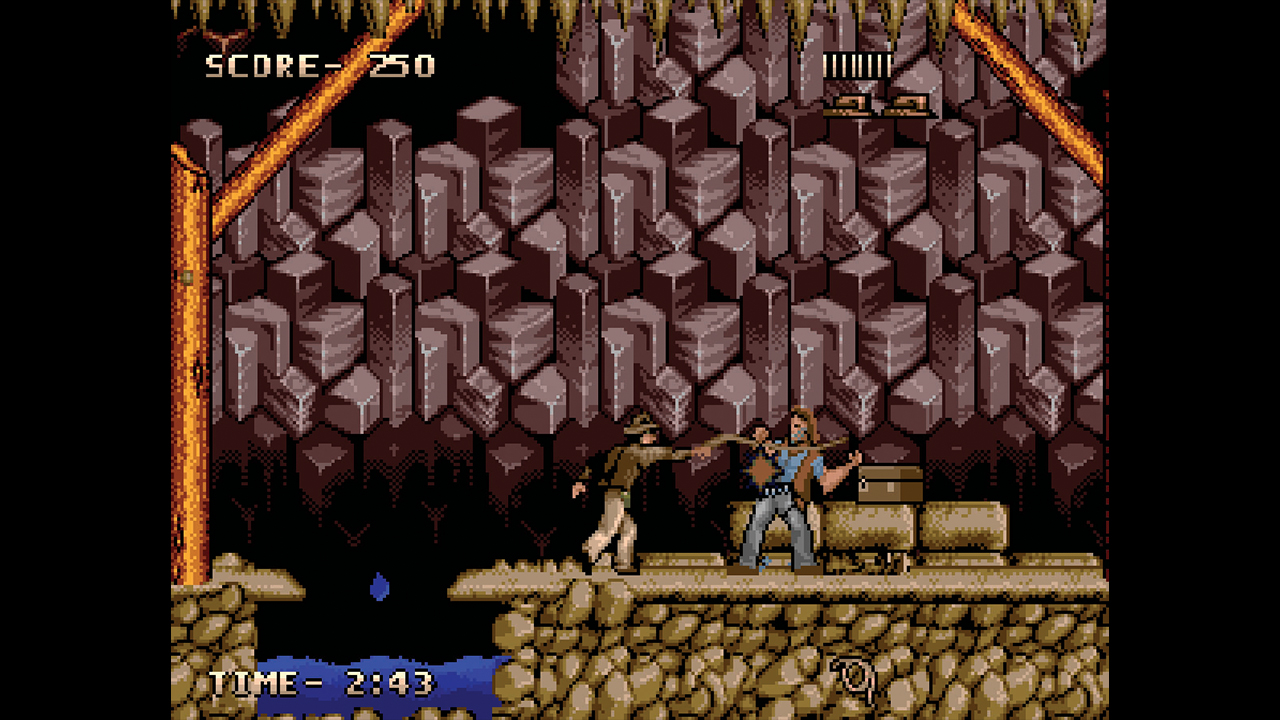
Release year: 1989 | Developer: Tiertex, NMS Software | Platform(s): Various
Released alongside Lucasfilm's graphic adventure adaptation of The Last Crusade, this action-focussed counterpart has you platforming, artefact collecting and whipping your way through four stages based on scenes from the movie, set in Colorado caves, a circus train, a Zeppelin and Castle Grunwald.
Indiana Jones And The Last Crusade
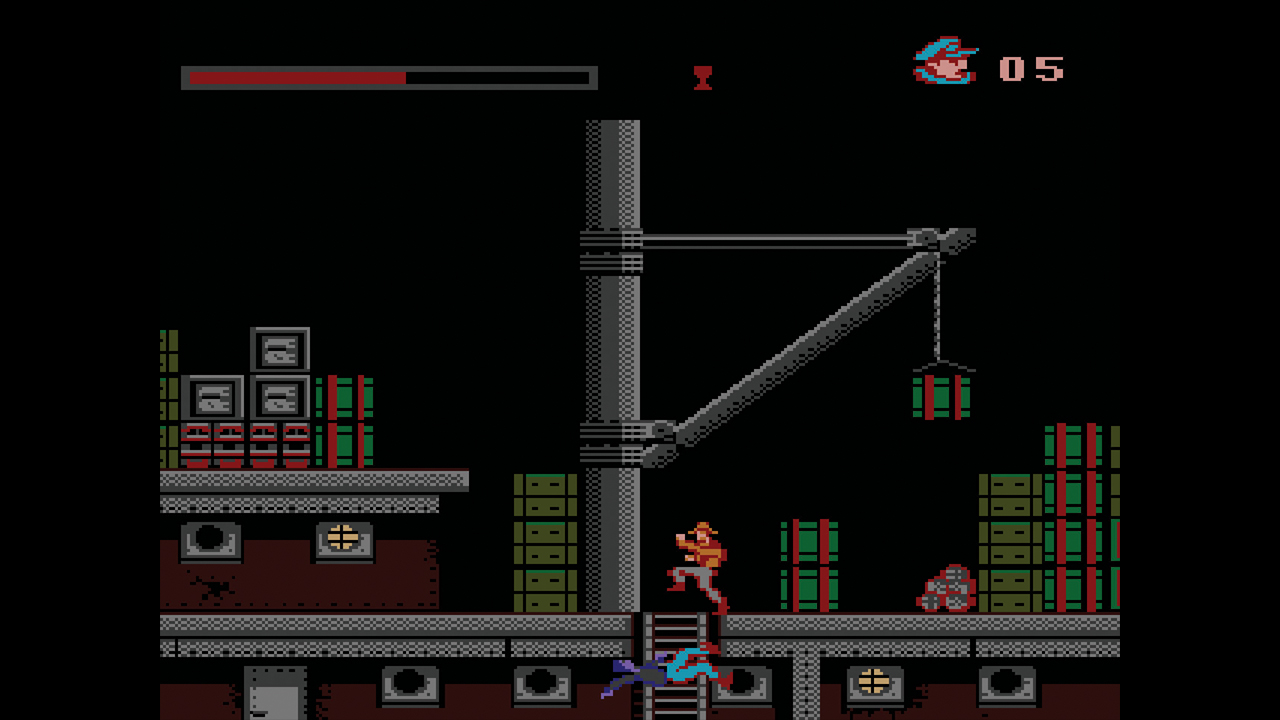
Release year: 1991 | Developer: Software Creations | Platform(s): Various
There's a variety of gameplay in this NES exclusive. It has a beat-'em-up on a ship and a sliding puzzle stage, there are top-down motorcycle chases and a maze of corridors in its Castle Grunwald level. As the plot unfolds, you get some choice over the order you play these eclectic challenges in.
The Young Indiana Jones Chronicles
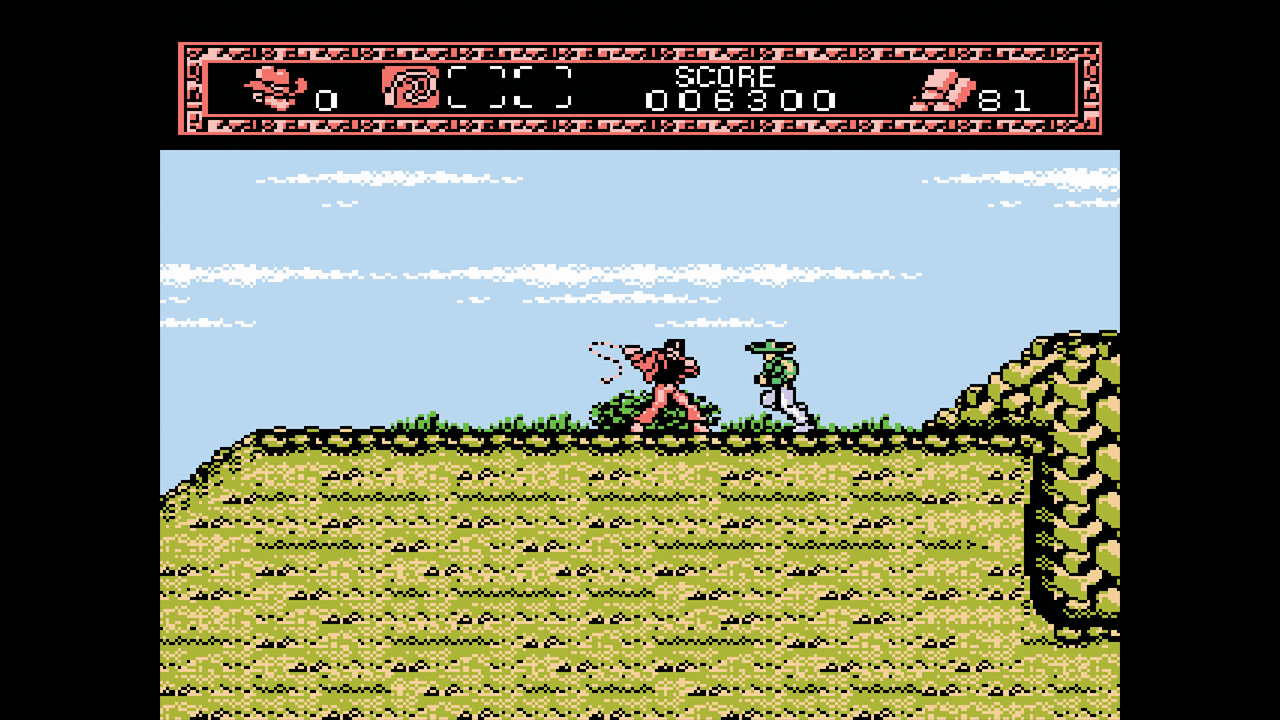
Release year: 1992 | Developer: Chris Gray Enterprises, Jaleco | Platform(s): NES
Based on the TV show of the same name, Jaleco's NES title sees young Indy fight in the Mexican Civil War before heading to the French and German battlefields of World War I. Each country has a selection of tough side-scrolling run-and-gun and shoot-'em-up stages, platforming levels and boss fights.
Instruments Of Chaos starring Young Indiana Jones
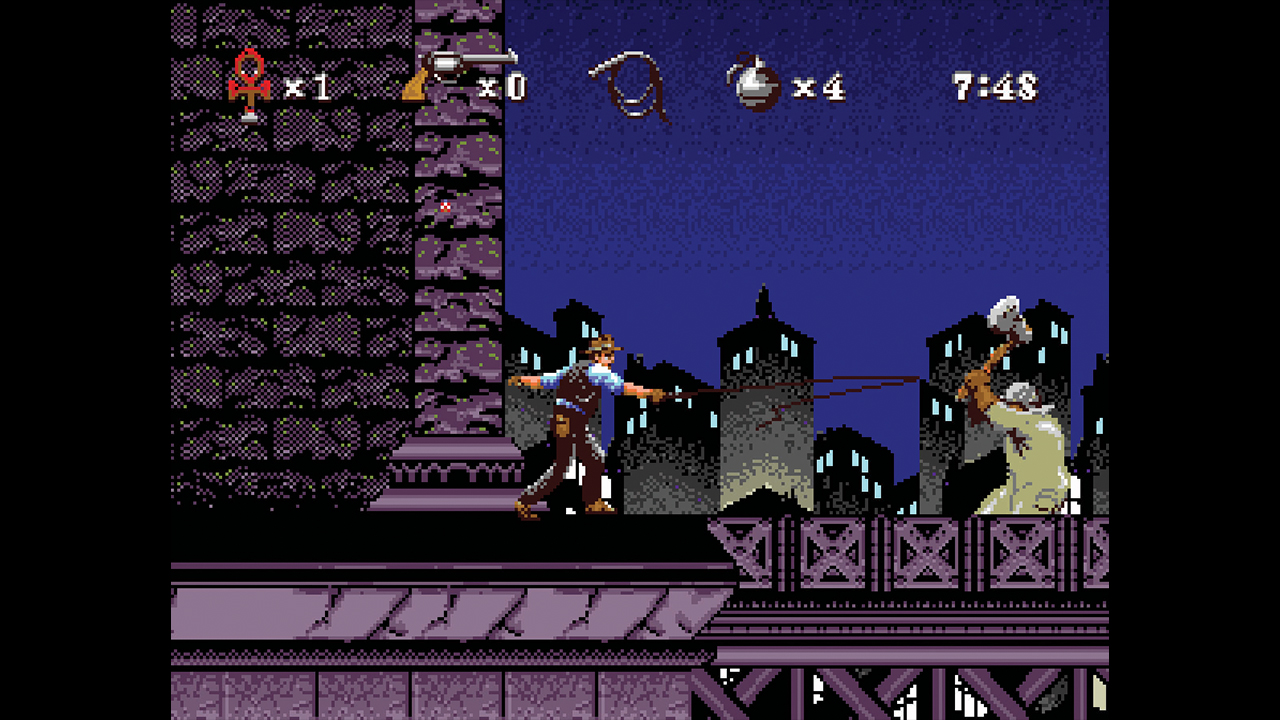
Release year: 1994 | Developer: Brian A. Rice, Inc. | Platform(s): Sega Mega Drive
If this challenging Mega Drive game isn't striking you with lighting then it's sending birds or bats after you that cause you to fall off the ledge that you've spent ages platforming to! You get young Indy's whip, a pistol and grenades to defend yourself as his mission takes you around the world.
Indiana Jones And His Desktop Adventures
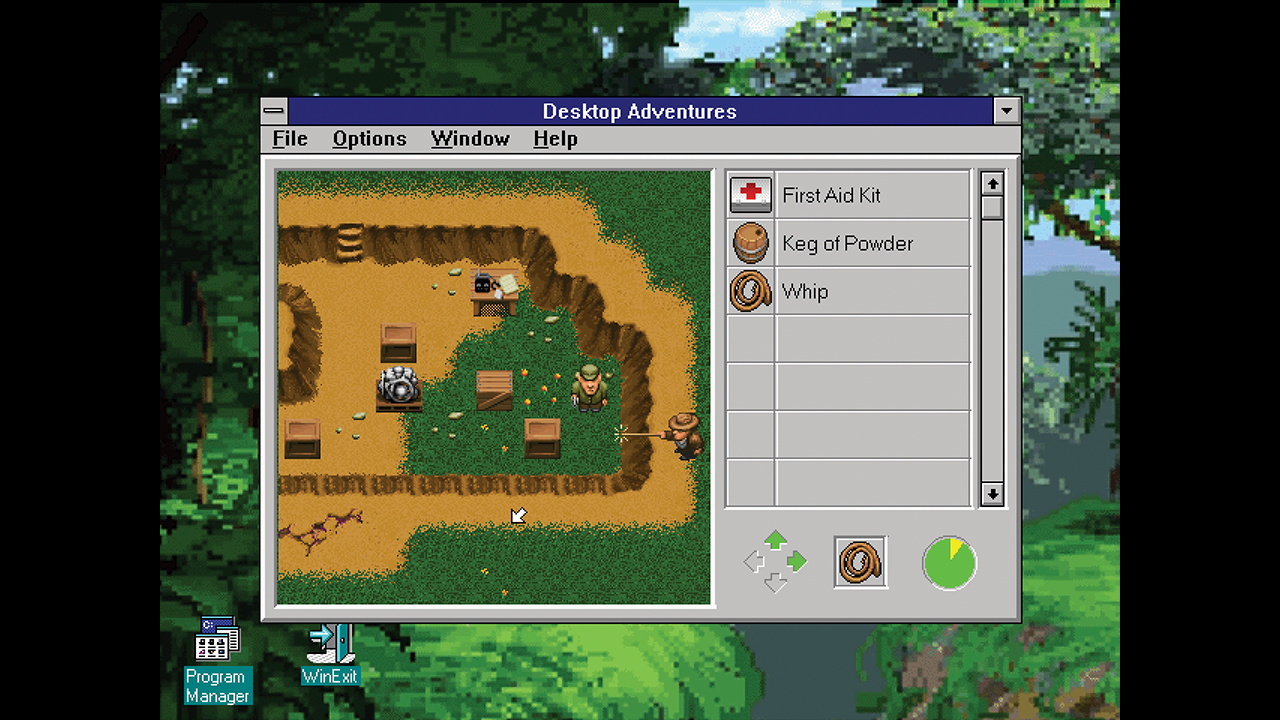
Release year: 1996 | Developer: LucasArts | Platform(s): PC
Best described as a point-and-click action adventure, Desktop Adventures sets you lock-and-key puzzles that you solve through exploration of its sprawling world, speaking to non-player characters and beating foes. The latter is done much like you would in an action game, albeit by using the mouse.
Indiana Jones And The Infernal Machine
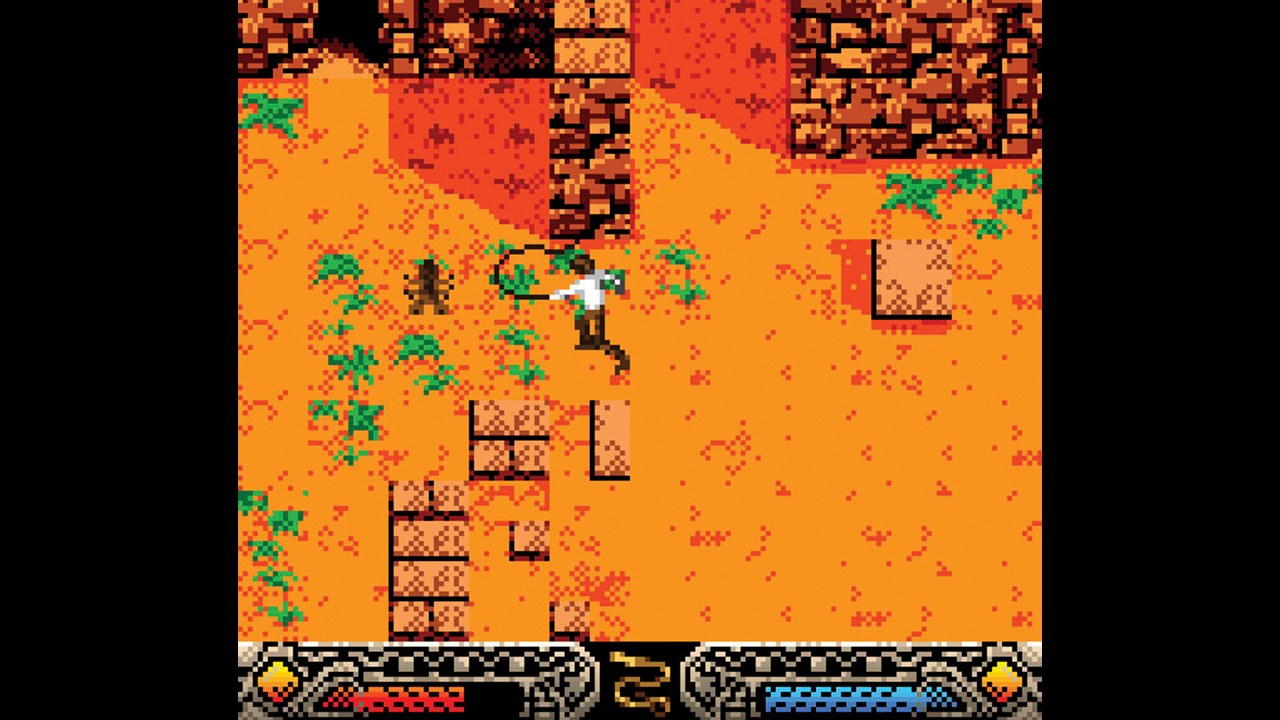
Release year: 1999 | Developer: LucasArts, Factor 5 | Platform(s): PC, Nintendo 64, Game Boy Color
Its level designs and top-down viewpoint set it apart from the third-person perspective PC and N64 versions, but the Game Boy Color Infernal Machine otherwise captures the essence of its counterparts. There's more emphasis on platforming and dealing with opponents, but this doesn't do it any harm.
Indiana Jones And The Emperor's Tomb
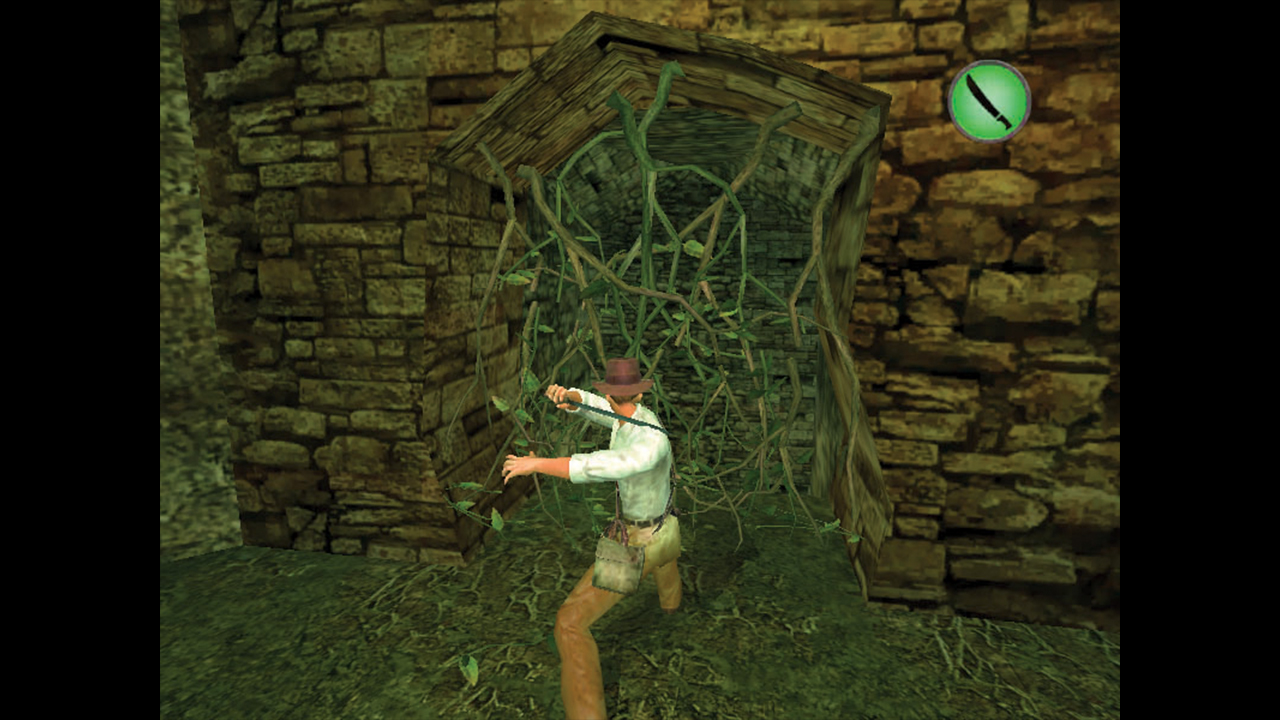
Release year: 2003 | Developer: The Collective | Platform(s): PC, PS2, Xbox
A stylish prequel to Temple Of Doom in game form, the Emperor's Tomb contains all the third-person platforming, exploration, problem solving and combat that you would expect in a Tomb Raider title. There are great setpieces and of course a globe-trotting narrative with a quest for an ancient artefact.
Lego Indiana Jones: The Original Adventures
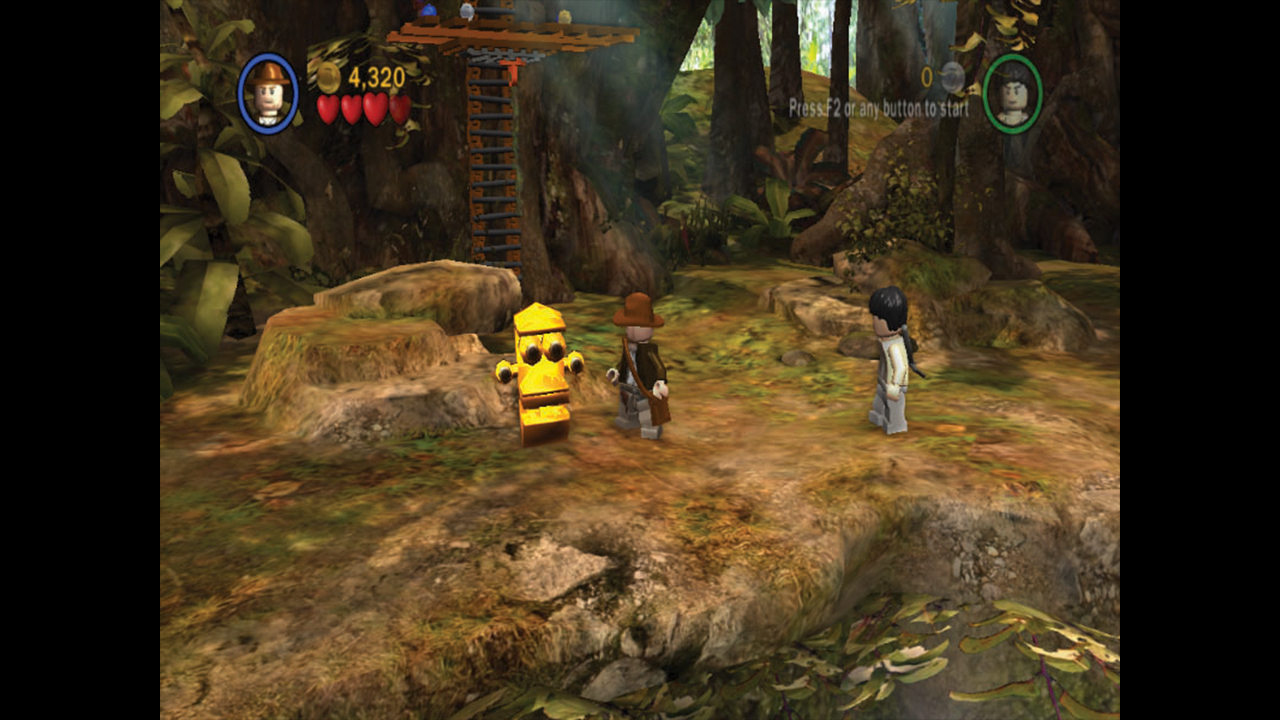
Release year: 2008 | Developer: Traveller's Tales | Platform(s): PC, PS3, PS2, PSP, Xbox 360, Nintendo Wii, Nintendo DS
Considering Lego Indiana Jones involves collecting Lego studs for points and building items from Lego blocks, it's a remarkably accurate if more family friendly adaptation of the first three films. It has a series of sidekicks that you can switch to if needed or let a second player or AI control.
Indiana Jones And The Staff of Kings

Release year: 2009 | Developer: Artificial Mind & Movement, Amaze Entertainment | Platform(s): PS2, PSP, Nintendo Wii, Nintendo DS
While similar to the Emperor's Tomb in terms of its platforming, adventuring and brawling, the Staff Of Kings distinguishes itself with its setpieces. These include climbing a burning rope bridge using Track & Field-style controls, a combat flight sim stage and a firefight where you aim using a reticule.
Lego Indiana Jones 2: The Adventure Continues
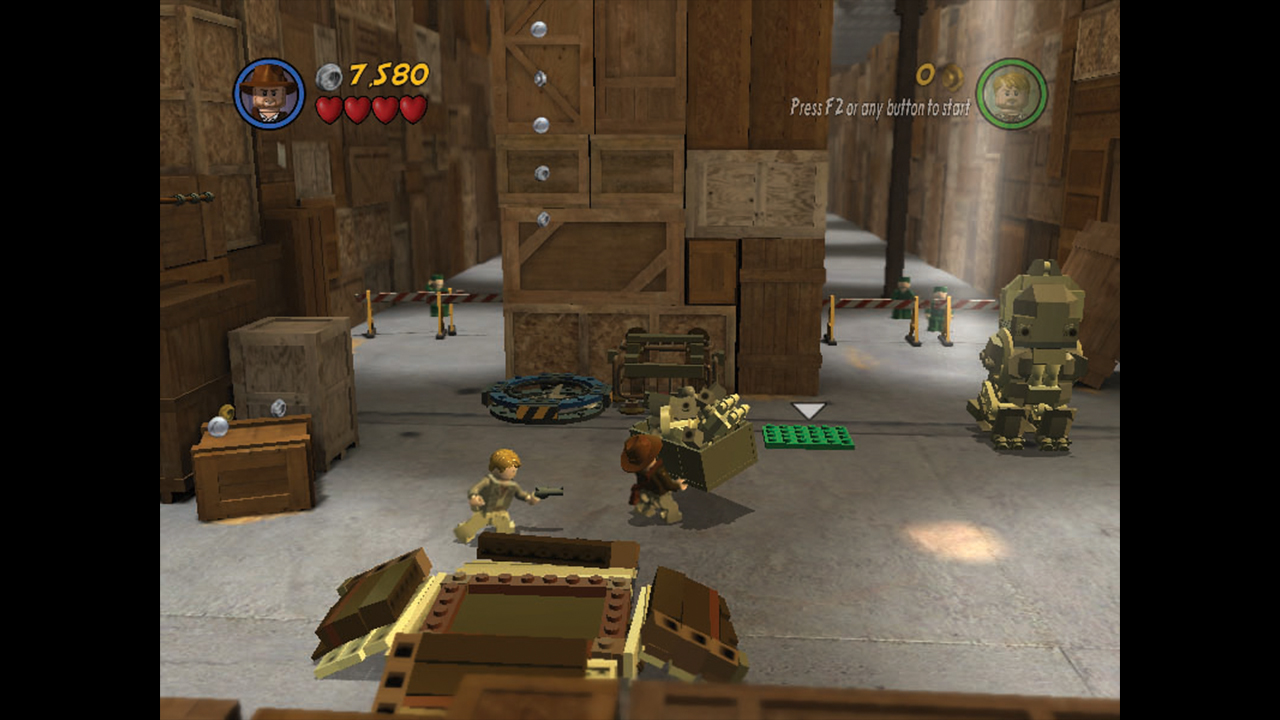
Release year: 2009 | Developer: Traveller's Tales | Platform(s): PC, PS3, Xbox 360, Nintendo Wii
The third Lego Indy title, if you count the Java platformer Mobile Adventure, Lego Indiana Jones 2 is packed full of features not found in the original like driving and puzzle-focussed levels. Like the original, it has stages based on the original film trilogy, but it also adapts The Kingdom Of The Crystal Skull.
Lego Indiana Jones 2: The Adventure Continues (handheld)
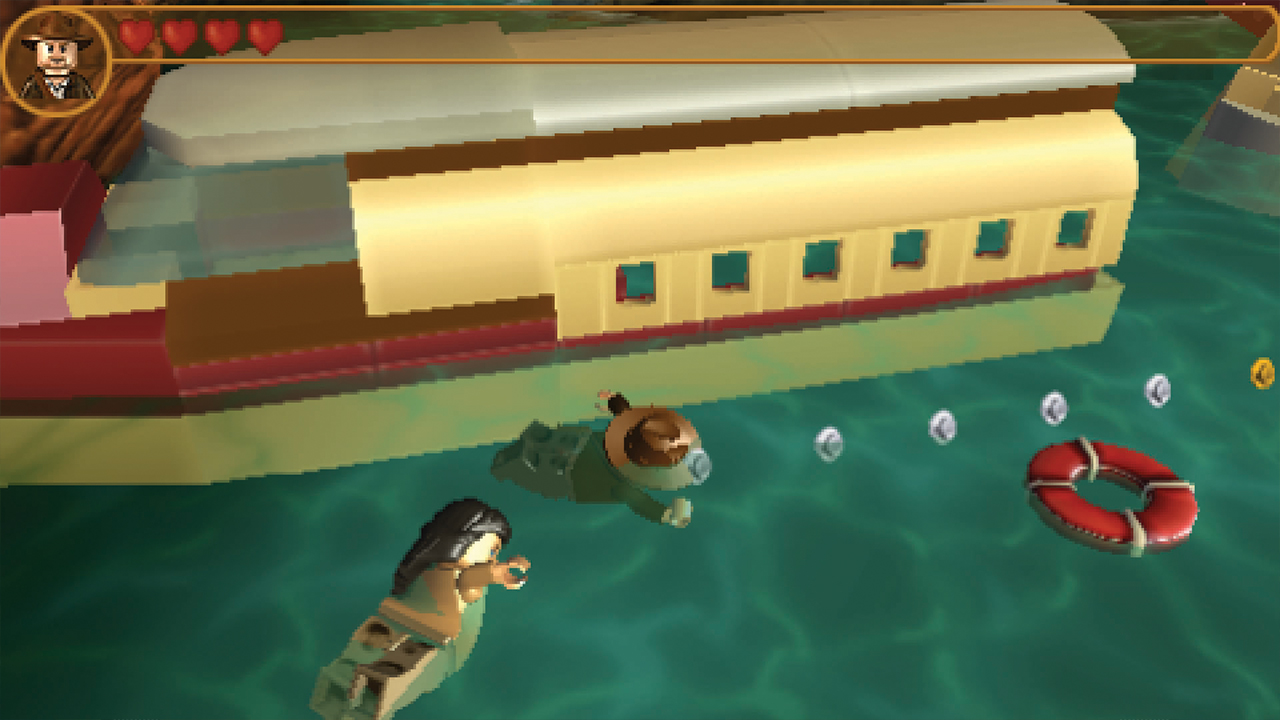
Release year: 2009 | Developer: TT Fusion | Platform(s): Nintendo DS, PSP
Based purely on The Kingdom Of The Crystal Skull, the PSP and DS adaptations of Lego Indiana Jones 2 primarily favour left/right movement across the screen and adapt some different movie scenes than the PC, Mac and other console versions. Despite this, the portable editions retain the fun of their counterparts.
Indiana Jones Adventure World
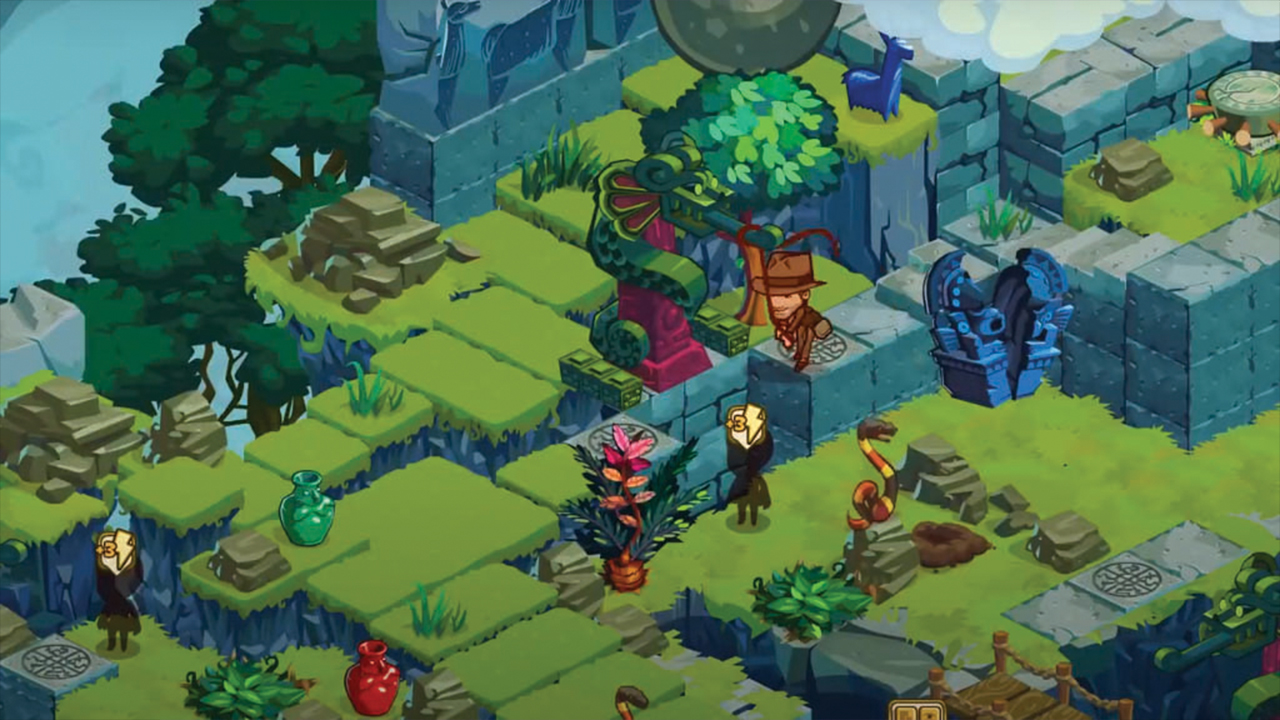
Release year: 2011 | Developer: Zynga Boston| Platform(s): Facebook
Long since shut down, this isometric Facebook game focussed on exploration but had some action elements. You played as a member of a group called The Adventure Society rather than Indiana Jones, but Indy would accompany you. Adventure World also had a turn-based combat system and some RPG elements.
So how did the new game turn out? In our Indiana Jones and the Great Circle review we called it "the best adventure Indy has embarked on in over 30 years"
Rory is a long-time contributor to Retro Gamer Magazine, and has contributed to the publication for over 10 years. He also contributed to GamesTM magazine, and once interviewed Hunt Emerson.
You must confirm your public display name before commenting
Please logout and then login again, you will then be prompted to enter your display name.
